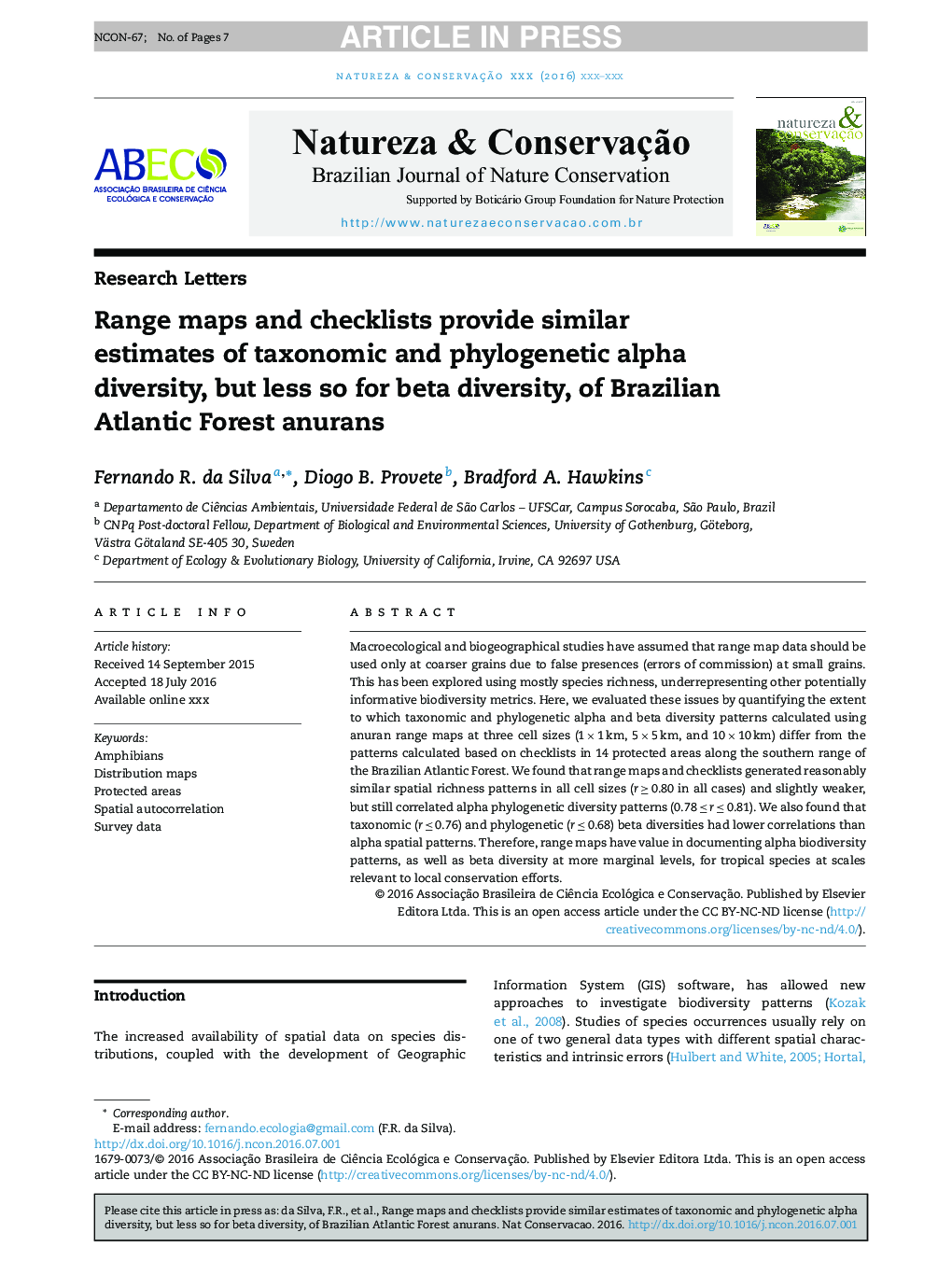| Article ID | Journal | Published Year | Pages | File Type |
|---|---|---|---|---|
| 8849451 | Natureza & Conservação | 2016 | 7 Pages |
Abstract
Macroecological and biogeographical studies have assumed that range map data should be used only at coarser grains due to false presences (errors of commission) at small grains. This has been explored using mostly species richness, underrepresenting other potentially informative biodiversity metrics. Here, we evaluated these issues by quantifying the extent to which taxonomic and phylogenetic alpha and beta diversity patterns calculated using anuran range maps at three cell sizes (1 Ã 1 km, 5 Ã 5 km, and 10 Ã 10 km) differ from the patterns calculated based on checklists in 14 protected areas along the southern range of the Brazilian Atlantic Forest. We found that range maps and checklists generated reasonably similar spatial richness patterns in all cell sizes (r â¥Â 0.80 in all cases) and slightly weaker, but still correlated alpha phylogenetic diversity patterns (0.78 â¤Â r â¤Â 0.81). We also found that taxonomic (r â¤Â 0.76) and phylogenetic (r â¤Â 0.68) beta diversities had lower correlations than alpha spatial patterns. Therefore, range maps have value in documenting alpha biodiversity patterns, as well as beta diversity at more marginal levels, for tropical species at scales relevant to local conservation efforts.
Related Topics
Life Sciences
Agricultural and Biological Sciences
Ecology, Evolution, Behavior and Systematics
Authors
Fernando R. da Silva, Diogo B. Provete, Bradford A. Hawkins,
